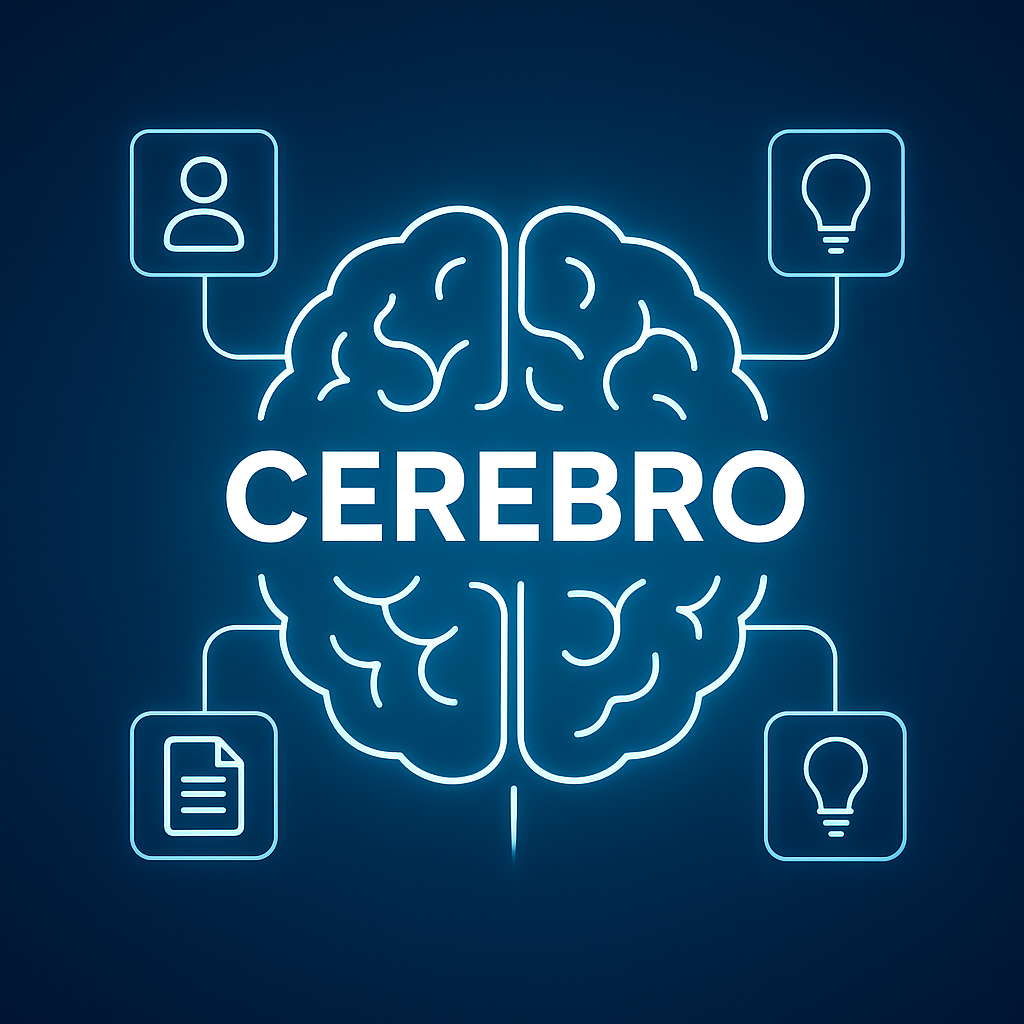Deconstructing Cerebro

The Digital Brain Powering Organizational Excellence
There’s a moment that every developer, auditor, or system architect knows well—that initial confrontation with a new, mysterious codebase. You open the project. You poke around. And the question inevitably arises:
“Okay, but what does this actually do?”
Sometimes, the answer is predictable: it's a blog engine, an invoicing tool, a to-do list app with delusions of grandeur.
But then you stumble upon something different. Something that doesn’t fit neatly into a single category.
That’s exactly what happened with Cerebro.
At first, Cerebro introduces itself humbly—as a Django project. Familiar territory. But peel back the layers, and a much more ambitious vision emerges. This isn’t just a software application. Cerebro is an Integrated Management System (IMS) engineered to function as the digital brain of an organization.
Let’s take a journey through its architecture and design to understand how and why this system deserves its name.
First Impressions: A Modular Monolith That Thinks in Systems
Cerebro starts with a strong foundation—the Model-View-Template pattern of Django, which naturally enforces a clean separation of concerns. Models for the data, views for the logic, and templates for the interface. Textbook.
But the real insight comes from its architectural pattern: Cerebro is built as a Modular Monolith.
That means everything is deployed as a single, cohesive unit, but internally it’s meticulously segmented into logical domains, each one a self-contained Django app. We're talking about:
profiles– For user structure and hierarchydocs– For document and knowledge managementpas– For action planning and process improvementideas– For innovation and employee suggestions
Each module is like a distinct lobe of the brain, dedicated to a specific cognitive function. The monolith ensures simplicity in deployment and maintainability, while the modularity allows for focused development and a crystal-clear domain model.
This design isn’t accidental—it reflects the system's purpose: coordinated complexity.
The Four Cognitive Lobes of Cerebro
Let’s go deeper into each of these apps to understand their role in the system’s mental map.
🧠 Pillar 1: Identity and Structure (profiles)
Before an organization can manage anything, it needs to understand who it is.
The profiles module extends Django’s built-in User model into something far more powerful. It doesn’t just store logins—it maps the organizational structure.
- Who works where?
- What is their role?
- What is their level of responsibility?
Think of it as an HR-lite engine baked directly into the platform. With this, every action in the system is contextualized: not just what happened, but who did it, in what capacity, and from what position in the hierarchy. This isn’t just identity; it’s organizational awareness.
📚 Pillar 2: The Knowledge Base (docs)
Every organization runs on documents—procedures, manuals, policies. But not all document systems are created equal.
Cerebro's docs module is a document management system with versioning and auditability baked in from the start. At its core:
Documento: The canonical model for any official text.Revision: A full version control system, tracking every change, file, and reason.Reporte: A mechanism to flag errors or outdated materials, acting as the system’s internal watchdog.
This isn’t Dropbox. It’s not “files on a server.” This is a Quality Management System (QMS) engine with real rigor. Every file has a lifecycle. Every revision is documented. Every report is actionable. It’s the memory cortex of the brain—precise, structured, and always traceable.
🔧 Pillar 3: Driving Improvement (pas)
If docs handles what is, the pas module handles what should be.
This app is Cerebro’s process improvement engine, designed to formalize problem-solving, manage change, and execute corrective actions. It revolves around three key models:
Plan: A strategic improvement or corrective action.Accion: Concrete tasks assigned to people with timelines and resources.Seguimiento: Progress tracking with real evidence and commentary.
Together, they form a full cycle of PDCA (Plan-Do-Check-Act) within the software itself. Forget spreadsheets. Forget email chains. This is process improvement with teeth—and accountability.
💡 Pillar 4: Fostering Innovation (ideas)
While pas captures top-down change, the ideas module brings in the bottom-up dynamic: innovation from the trenches.
It provides a structured way for any user—regardless of title—to submit proposals, projects, or ideas for review.
Idea: A user-submitted improvement suggestion.Resolve: A structured management response—accepted, rejected, or pending.
It’s a suggestion box, yes—but one that’s digitized, categorized, and treated with respect. Every idea enters the system. Every idea gets a response. And when approved, it can cascade into a Plan, which might generate a Documento, all performed by Profiles.
This isn’t a feature. It’s a culture.
The Synthesis: More Than the Sum of Its Parts
If you isolated each module of Cerebro, you’d still have a useful tool. But their real power lies in how they interact.
Consider this chain:
- A user submits an
Idea. - It’s accepted and turned into a
Plan. - That plan includes multiple
Acciones, which require new documentation. - A
Documentois created or revised, stored in thedocsmodule. - The process is driven by users whose roles and context are defined in
profiles.
Each of these transitions is intentional, visible, and auditable. This is not a loose federation of tools. This is a fully integrated system with a single source of truth across domains.
Cerebro doesn’t just support an organization—it models it.
Why Cerebro Matters (And Why It’s Exciting)
We’re living in a time when organizations are drowning in tools—one for HR, one for docs, one for improvement, another for suggestions. The result? Friction. Data silos. Duplication. Gaps in accountability.
Cerebro rejects that paradigm.
By integrating core organizational functions—identity, documentation, improvement, and innovation—into a single platform, it becomes more than software. It becomes an extension of the organization's nervous system.
It helps teams remember. It helps them adapt. It gives structure to ideas and discipline to change. It turns every process into a closed loop with feedback, context, and traceability.
And that’s what makes it exciting. Not just that it works—but that it thinks.
Final Thoughts
Cerebro is aptly named. It’s not flashy. It’s not chasing trends. But it embodies intelligence in software design: clear architecture, domain-driven models, and meaningful integration.
If you're looking for a system that doesn’t just help your organization function but helps it understand itself, Cerebro might be exactly what you’ve been waiting for.
It’s not an app. It’s a brain.




